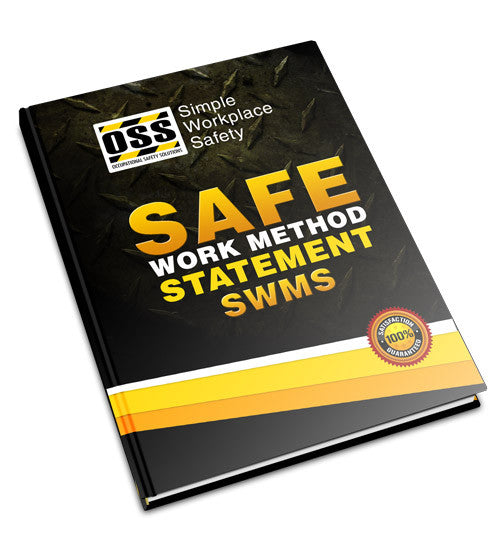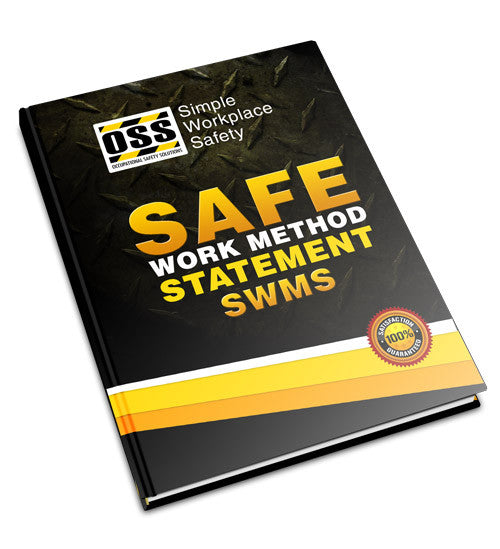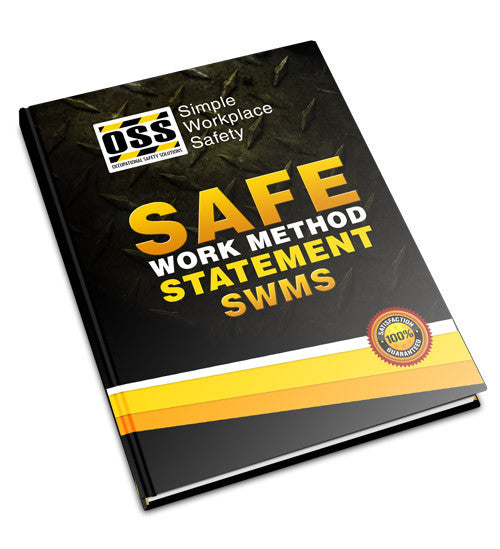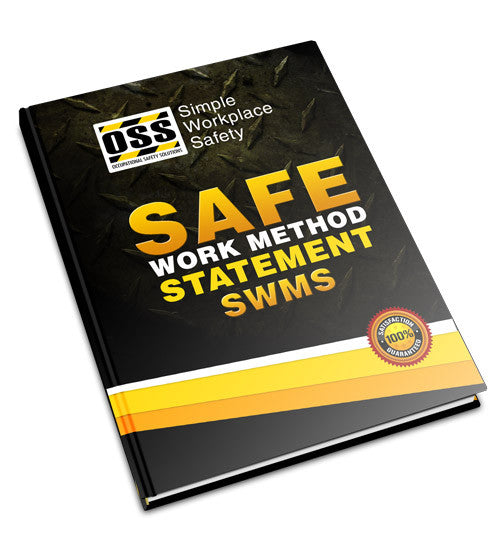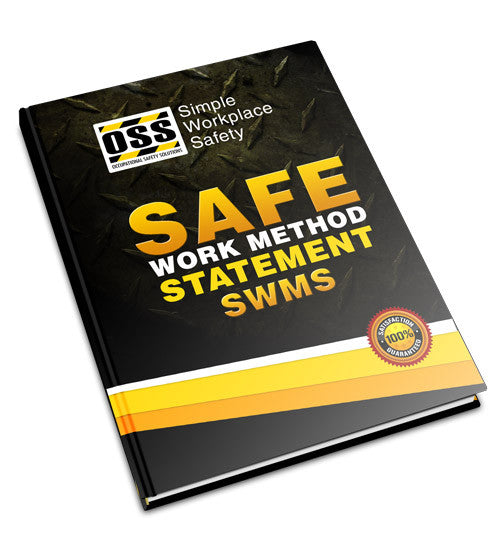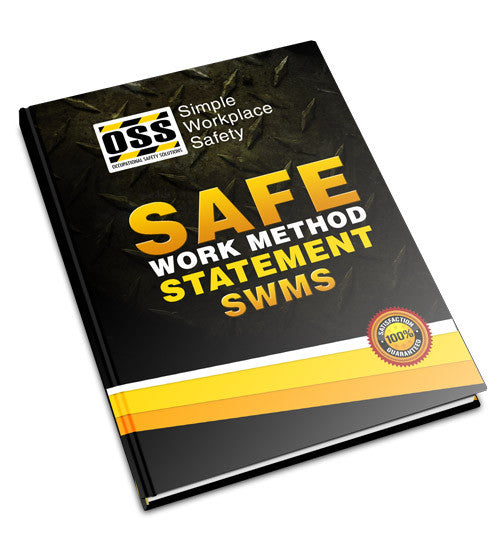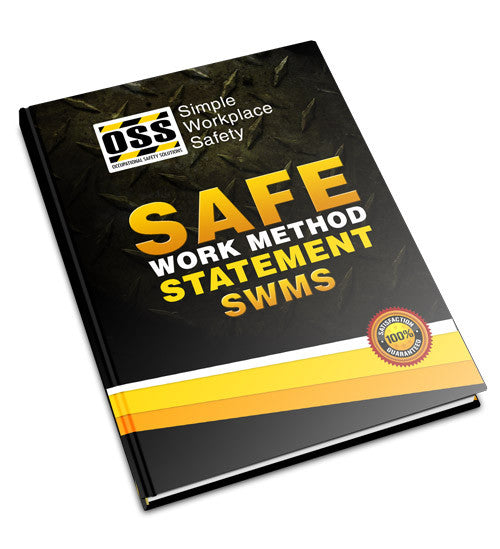Get The Support You Need!
Safe Work Method Statements (SWMS) - Your Complete SWMS Resource
Filters
- Air Conditioning (20)
- Audio Visual (19)
- Bathrooms (24)
- Bricklaying (19)
- Carpentry (55)
- Cleaning (12)
- Concreting (17)
- Construction (53)
- Earthmoving (9)
- Electrical (20)
- Excavation (8)
- Garden Maintenance (14)
- Handyman (43)
- Internal Fit-Out (30)
- Joinery / Cabinet Making (28)
- Kitchens (24)
- Landscaping (26)
- Painting (16)
- Plastering (18)
- Plumbing (23)
- Principal Contractor (1)
- Roadwork (13)
- Roofing (22)
- SWMS Industry Packs (1)
- Tiling (16)
- Welding (15)
-
Original price $79.75 - Original price $79.75Original price$79.75$79.75 - $79.75Current price $79.75| /
SWMS Stair Construction
This pre-written Stair Construction Safe Work Method Statement template provides the typical safety controls and possible hazards associated with s...
View full details -
Original price $79.75 - Original price $79.75Original price$79.75$79.75 - $79.75Current price $79.75| /
SWMS Steel Stud and Track Installation
This pre-written Steel Stud and Track Installation Safe Work Method Statement template provides the typical safety controls and possible hazards as...
View full details -
Original price $79.75 - Original price $79.75Original price$79.75$79.75 - $79.75Current price $79.75| /
SWMS Wardrobe Installation
This pre-written Wardrobe Installation Safe Work Method Statement template provides the typical safety controls and possible hazards associated wit...
View full details -
Original price $49.50 - Original price $49.50Original price$49.50$49.50 - $49.50Current price $49.50| /
SWMS Wet and Dry Vacuum
This pre-written Wet and Dry Vacuum Safe Work Method Statement template provides the typical safety controls and possible hazards associated with u...
View full details -
Original price $79.75 - Original price $79.75Original price$79.75$79.75 - $79.75Current price $79.75| /
SWMS Work in Ceiling Space
This pre-written Work in Ceiling Space Safe Work Method Statement template provides the typical safety controls and possible hazards associated wit...
View full details -
Original price $79.75 - Original price $79.75Original price$79.75$79.75 - $79.75Current price $79.75| /
SWMS Working at Height
Working at height is a high risk work activity that can cause serious injury or death if not carried out in a safe manner. This pre-written Working...
View full details -
Original price $79.75 - Original price $79.75Original price$79.75$79.75 - $79.75Current price $79.75| /
SWMS Worksite Hazards
This pre-written Worksite Hazards Safe Work Method Statement template provides the typical safety controls and possible hazards associated with a t...
View full details
Safe Work Method Statements (SWMS) aren't Just for High-Risk Construction Work.
There needs to be more clarity around SWMS documents and their use, and we'd like to provide that. Whether you use them in high-risk construction or elsewhere, they can be one of your most effective and efficient control measures, and when you do SWMSs well, almost everything else you do will tend to follow.
Let's quickly look at the following:
- What they are.
- Why are they central to your WHS or OH&S system.
- How they are different from a J.S.A. and S.O.P.
- What must an SWMS include?
- Who is responsible?
- The use of SWMSs in high-risk construction.
- When they're requested elsewhere.
- Some industry package and system solutions.
What is a SWMS?
A Safe Work Method Statement (SWMS) is a document that explains how specific workplace activities are to be performed. The document identifies:
- The actions being fulfilled.
- Associated hazards,
- The risks they produce, and
- How to control those risks.
Why are SWMS Central to your WHS or OH&S System?
There are two reasons why SWMS documents are central to your system. Firstly, in certain instances, they are required. Secondly, they are effective, efficient and practical in their implementation.
An SWMS is required whenever high-risk construction work is performed (as defined by the WHS Act, which we'll explain soon). This means the Person Conducting a Business or Undertaking (the PCBU) must ensure the preparation, following, and retention of these SWMS and their regular and systematic review.
SWMS are also one of the most effective of all control measures. They are the most common and influential of administrative controls. When their use becomes a work-culture centrepiece, they can powerfully enable and evidence your duty of care observance and due diligence compliance.
Allowing yourself a little creative imagination, think about how you control risks as being like strapping on a bulletproof vest. Most of your WHS. or OH&S risk controls are like the padding and absorption features of the vest. However, your Safe Work Method Statements (SWMS) are like those velcro straps that hold the vest comfortably and effectively in place.
But they can be overdone. More on that soon.
How is a SWMS Different from a J.S.A. or S.O.P.?
A Job Safety Analysis (J.S.A.) and a Safe Operating Procedure (S.O.P.) are more focused than a SWMS. They focus on isolated tasks and processes. An SWMS is different because:
- It is broader in its treatment of activities,
- It is highly focused on identifying and monitoring control measures.
- It can cover both specific activities as well as combination and complex activities (which most high-risk construction work activities are)
What Must an SWMS include?
Safe Work Method Statements (SWMS) are just one of various available risk control measures. That said, they are also (arguably) the centrepiece. When used effectively, they bring structure and stability to other WHS and OH&S activities.
Like straps on a bulletproof vest, they help other controls work and empower the people who use them. They bring physical integrity to what would otherwise be a loose-fitting and ineffective strategy. A safe work method statement does this by providing the required information, instructions, and a means of recording actions in a predictable and fuss-free format. They will:
- Identify hazards and unsafe work practices.
- Detail the best control measures, as well as backup controls.
- Describe what goes into the implementation of risk management plans.
- Detail the person or business doing the work and the person responsible.
- At a construction project, detail the principal contractor, worksite address, the date of preparation and when provided to the principal contractor.
- List the names of workers consulted, the dates and the signatures.
- Reference relevant Legislation, Codes and Standards.
- Show any review date and summarise any changes made.
SWMS risk control strategies, as per the hierarchy of control, typically seek to:
- Eliminate hazards (perhaps by using engineering controls),
- Reduce them (for example, by creating traffic corridors),
- Administratively minimise them (e.g. by SWMS) and/or
- Suggest Personal Protective Equipment (PPE).
A well-designed SWMS template is easy to prepare, straightforward for relevant workers to implement, and will enable an efficient and effective review process. That is what our SWMS templates do.
Who is Responsible?
When a safe work method statement is required, the PCBU must prepare it; where there is more than one PBCU, or the work costs $250,000 or more, a Principal Contractor (PC) is appointed. This person is then responsible for collecting, assessing, monitoring and reviewing any SWMS in place.
A PC and PCBU can delegate processes and work activities, BUT the responsibility for SWMS quality and implementation remains with them.
The Principal Contractor (or PCBU where there is not a P.C.) is responsible for:
- Preparing SWMS documents before work begins,
- Ensuring any persons involved fulfil their duties consistently,
- Identifying and controlling hazards and risks as per the document, and
- Reviewing and adjusting the SWMS for ongoing effectiveness over time (Note: workers must be consulted - including contractors and subcontractors).
Safe Work Method Statements and High-Risk Construction Work (HRCW).
Both Australia's Work Health and Safety Regulations (2011) and the Model WHS Regulations (last updated in 2022) require using SWMS documents for a range of high-risk construction work activities. Specifically, Regulation 291 details 19 High-Risk Category activities and an SWMS must be prepared before any such work is undertaken.
You can follow the Regulation 291 link to see the specific list, but for ease of understanding, we'll summarise them as follows.
What Activities Are Deemed High-Risk Construction Work?
There are 19 activities classified as high-risk construction work (HRCW), and they all involve hazards and risks with significant potential for significant harm. For clarity, we reduce this 19-item list into five hazard groupings. They are activities that:
- It might result in falling,
- Might develop due to proximity (or being close to something/someone),
- Result from the use of a powered mobile plant, specific equipment or materials,
- Are common when dealing with particular structures and services, and
- Occur in a range of environmental specifics.
To break this down more specifically, these five activity groups involve the following circumstances: an SWMS is required in such situations:
- When there is a risk of a person falling more than two metres or falling into a trench or shaft of excavated depth greater than 1.5m.
- If someone could drown by falling into a liquid, a structural collapse or as a result of diving work.
- Where structural alterations are used to prevent a collapse.
- Wherever a tunnel is involved.
- When powered mobile plant work is being done or the plant is being moved.
- If rail traffic or nearby road users could be harmed.
- Whenever asbestos is being disturbed or removed.
- If tilt-up or precast concrete work is being done.
- Wherever explosives are used or demolition work is being conducted.
- When work occurs on or near chemical, fuel or refrigerant lines, energised electrical services, pressurised gas distribution mains, piping or telecommunications towers.
- If a workspace could have a contaminated or flammable atmosphere, artificial temperature extremes or a confined space.
A safe work method statement must be retained in these prescribed situations. The SWMS can be specific to each high-risk construction work item or encompass many items in a single SWMS. The most important thing to remember is that these hazards are identified, and the risks are controlled.
If you want to see the detailed list, follow this Regulation 291 link.
What if You're Asked for a SWMS for Another Activity?
It's not uncommon for clients to stipulate separate SWMS that exceed the legal minimums for construction projects - and it doesn't matter whether the tender process is open, negotiated, selective or staged. These extraordinary expectations can include requests for safe work method statements beyond the stipulated high-risk construction work activities. We know from conversations with our customers that this is increasingly happening and that there needs to be more clarity around the issue.
These expectations and confusion aren't helped by SWMS template suppliers that don't tell you their additional offerings are not required or who oversell with needless SWMS documents. Both are practices we do not do.
We always tell our customers that there are two forms of compliance; what is legally required and what your clients expect. Both are very real and relevant to win work!
When Clients Ask for More
Technically, your client can be as unrealistic as they like. They're paying for the work, so they can stipulate whatever control measures they want. Theoretically, they can even demand a SWMS for taking a dump (and no, we're not talking about rubbish removal). Our list of available templates goes beyond the original 19 HRCW activities.
When the marketplace demands additional SWMS or industry control measures change, we usually swiftly address the need. Sometimes we also develop specific solutions for specific clients. At other times we have helped them use a generic SWMS template to meet the demand. Ultimately, we aim to be as helpful as we can afford to be.
There have also been times when we have coached our customers on challenging the tender requirement, and sometimes, changes result. Sometimes it is an honest mistake by an overzealous tender writer, and when the proposed measures are politely questioned, they are withdrawn. Many do not understand the regulations and know there are less laborious methods of managing risks to health and safety.
Here, as always, we recommend you talk with us. Call 1800 304 336 to enjoy greater clarity and efficiency in your purchase journey.
The Benefit of Our Industry Packages and Holistic Safety Management Systems.
In addition to helping you meet particular resource needs and coaching you through awkward situations, we sometimes recommend a more significant investment. An 'upsell' often feels uncomfortable, but the reasons and benefits become clear once explained.
Examples of this include:
- The purchase of an industry-specific package,
- Investment in a site or project-specific safety management plan.
- More effective investment in a comprehensive safety management system.
In the first case, we have assembled the industry-specific packages based on our experience with others in your industry - so you benefit from many hours of conversations and problem-solving.
Similarly, investment in a safety management plan or system is typically recommended when your obligations, needs, or economies of scale make it appropriate. A D.I.Y. and piece-assembling approach almost always costs you more and serves you less effectively.
Where to Learn More?
Talk to us. We are across all the standards, regulations, codes and requirements. We also know our products and the market realities, and we speak with your industry peers and competitors daily. We'll quickly help you identify your needs and help you find a solution. In all seriousness, we can do this stuff in our sleep (and we sometimes do). Call 1800 304 336.

